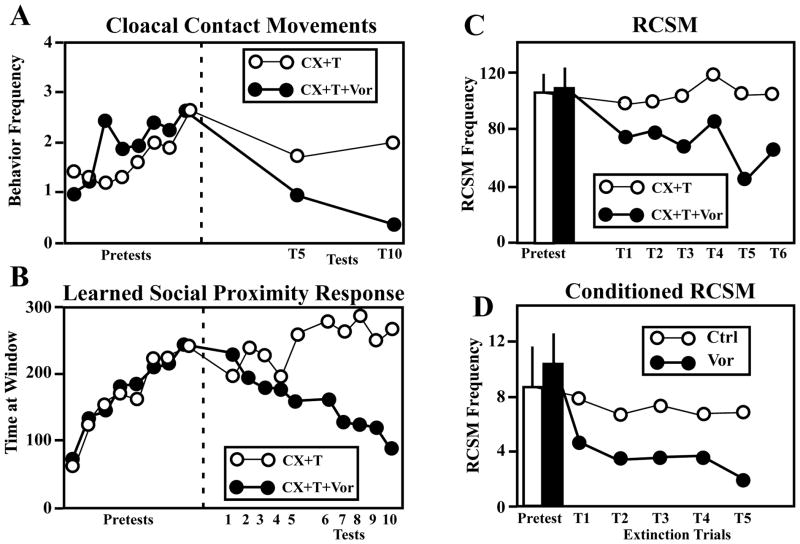Figure 1.
Testosterone aromatization plays a key, limiting role in the activation by testosterone (T) of consummatory (A) and appetitive (B–C) aspects of male sexual behavior as well as on learned aspects of this behavior (D). A–B. Castrated male quail were treated with T and submitted to 8 pretests during with they could acquire the learned social proximity response (B) and express copulatory behavior (A). During the second part of the experiment (Tests 1–10, right of the dotted line), half of the subjects were injected twice daily with the aromatase inhibitor, Vorozole™ (CX+T+Vor) while other birds were injected with the vehicle (CX+T). Treatment with Vorozole™ markedly decreased the expression of copulatory behavior (A) and of the learned social proximity response (B). C. Effect of the treatment of castrated male quail with testosterone (CX+T) associated or not with the aromatase inhibitor Vorozole™ (CX+T+VOR) on the appetitive male sexual behavior measured by the frequency of rhythmic contractions of the cloacal sphincter muscles (RCSM). A progressive decline in RCSM frequency is observed during the 6 tests (T1–T6) performed during the 25 days when birds were exposed to the aromatase inhibitor. D. Effect of aromatase inhibition on the frequency of conditioned RCSM expressed in response to the visual presentation of a conditioned stimulus (see text for additional information). Adapted from data in [33, 44, 47].

